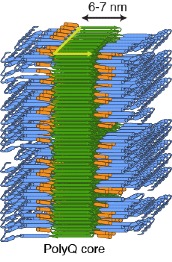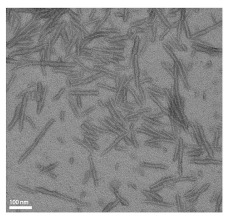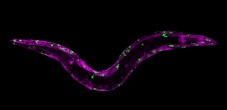Biophysics of polyglutamine aggregation: how does it start and how does it end?
On July 6th 2022 we will organize an online networking event sponsored by the Biophysical Society (BPS), on the topic of the biophysics of polyglutamine aggregation. This event is part of the BPS networking event series, and will take place over several hours (3 p.m. - 6 p.m. CET) with participants from across the globe, with a key role for junior scientists.
Topic of the event:
Recent discoveries in the realm of polyglutamine (polyQ) protein aggregation research provide an example of how biophysics is involved in protein misfolding diseases like Huntington’s disease (HD). In the current networking event we bring together scientists from different continents, who look at polyQ from different biophysical and biological perspectives. We will explore ways to connect molecular biophysics (in vitro and in silico) to biological and cellular contexts, in order to help understand, and even treat, this kind of protein misfolding disease.
The event offers a platform for networking and discussion of the following questions:
- How can we integrate experimental and computational biophysics to understand polyQ protein aggregation and nucleation?
- What (if any) structural features are carried from the nucleation event to the mature protein aggregates?
- How do we understand and study these fundamentally biophysical processes in a biological context?
Invited and confirmed speakers:
- Tessa Sinnige (Assistant Professor; Utrecht Univ., Netherlands)
- Randal Halfmann (Associate Professor, Stowers Institute, Kansas, USA)
- Ashwani Thakur (Assistant Professor, Indian Institute of Technology Kanpur, India)
Format:
This will be an online Zoom-based event, involving three invited keynote speakers followed by parallel breakout sessions. The three parallel breakout sessions will facilitate discussion and exchange of ideas, and these will feature junior scientists (PhD, postdoc) from the field. In each session we will also have invited junior speakers. Each of the main speakers will be involved in one of the breakout sessions, guiding the discussion.
We end the meeting with a final joint session in which we discuss the breakout group conclusions as a whole meeting, touching upon areas of agreement and disagreement, and look for opportunities to bring different perspectives into a unified view of the biophysics of polyQ aggregation.
Organizers:
Patrick van der Wel (p.c.a.van.der.wel@rug.nl)
Markus Miettinen (Markus.Miettinen@mpikg.mpg.de)
Program:
SESSION 1: 15:00–16:30
Short talk:
Kiersten Ruff [Pappu group]: Insights regarding the monomeric structure and modulation of aggregation of Httex1
Short talk:
Albert Escobedo [Salvatella group]: Side chain to main chain hydrogen bonds in context: from monomeric polyQ helices to fibrils
Talk:
Ashwani Thakur: Polyglutamine aggregation mechanism based approaches for drug discovery in Huntington's disease
Short talk:
Maurice Dekker [Onck group]: Inferring pathways and mechanisms of polyglutamine aggregation from coarse-grained molecular dynamics simulations
Short talk:
Chathuranga Siriwardhana [Legleiter group]: Impeding huntingtin lipid binding represent a novel therapeutic strategy
BREAK 16:30–16:45
SESSION 2: 16:45–18:30
Short talk:
Greeshama Jain [van der Wel group]: Multifaceted effects of small molecule inhibitor on the aggregation mechanism of Huntingtin Exon 1
Short talk:
Mahdi Bagherpoor Helabad [Miettinen group]: Dovetailing molecular dynamics simulations with solid-state NMR to resolve polyglutamine fibrils in atomic detail
Talk:
Randal Halfmann: Deconstructing the amyloid nucleus of pathologic polyglutamine
Short talk:
Anne Ast [Wanker group]: Aggregate stability is a molecular determinant of aggregate induced toxicity
Short talk:
Nathan Riguet [Lashuel group]: Mechanisms of inclusion formation in cellular models of Huntington’s disease
Talk:
Tessa Sinnige: Elucidating the molecular mechanisms of polyQ aggregation in C. elegans as a living model system
Registration:
Please go to the link below to register for this free event. Registration is handled by the Biophysical Society, and it will require a (free) BPS account. Please let us know if you have any difficulty signing up!
Link to the registration: https://www.biophysics.org/upcoming-networking-events/virtual-networking-event-biophysics-of-polyglutamine-aggregation-how-does-it-start-and-how-does-it-end
More information will follow!
Questions? Please contact the organizers as indicated above.



| Last modified: | 10 July 2023 4.24 p.m. |
More news
-
16 April 2024
UG signs Barcelona Declaration on Open Research Information
In a significant stride toward advancing responsible research assessment and open science, the University of Groningen has officially signed the Barcelona Declaration on Open Research Information.
-
02 April 2024
Flying on wood dust
Every two weeks, UG Makers puts the spotlight on a researcher who has created something tangible, ranging from homemade measuring equipment for academic research to small or larger products that can change our daily lives. That is how UG...
-
18 March 2024
VentureLab North helps researchers to develop succesful startups
It has happened to many researchers. While working, you suddenly ask yourself: would this not be incredibly useful for people outside of my own research discipline? There are many ways to share the results of your research. For example, think of a...
